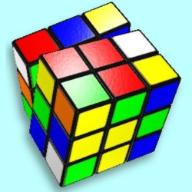What are the three possible number of solutions for a quadratic equation? Describe the x-intercept(s) for each type of solution.?
2020-08-26 11:58 pm
What is the value of the discriminant for each type of solution?
回答 (5)
2020-08-27 12:19 am
Consider the number of solutions for the quadratic equation ax² + bx + c = 0
Case I:
Number of solutions = 2
The two solutions are the two x-intercepts of the graph y = ax² + bx + c
The discriminant, Δ = b² - 4ac > 0
Case II:
Number of solutions = 1
The solution is equal to the x-intercept of the graph y = ax² + bx + c. The x-intercept is also the point of contact of the graph and the x-axis.
The discriminant, Δ = b² - 4ac = 0
Case III:
Number of solutions = 0
The is no x-intercept for the graph y = ax² + bx + c
The discriminant, Δ = b² - 4ac < 0
Case I:
Number of solutions = 2
The two solutions are the two x-intercepts of the graph y = ax² + bx + c
The discriminant, Δ = b² - 4ac > 0
Case II:
Number of solutions = 1
The solution is equal to the x-intercept of the graph y = ax² + bx + c. The x-intercept is also the point of contact of the graph and the x-axis.
The discriminant, Δ = b² - 4ac = 0
Case III:
Number of solutions = 0
The is no x-intercept for the graph y = ax² + bx + c
The discriminant, Δ = b² - 4ac < 0
2020-08-27 2:27 am
The discriminant is that part of the quadratic equation under the square root symbol:
d = b² - 4ac
The discriminant tells you the number of real solutions to a quadratic.
There are 3 possible values of the discriminant.
d > 0 : discriminant is positive means there are 2 real solutions.
d = 0 : discriminant is zero means there is 1 real solution (a double root).
d < 0 : discriminant is negative means there are 0 real solutions (and two complex roots).
The number of roots is the same as the number of x-intercepts. The picture should help you visualize this.
d = b² - 4ac
The discriminant tells you the number of real solutions to a quadratic.
There are 3 possible values of the discriminant.
d > 0 : discriminant is positive means there are 2 real solutions.
d = 0 : discriminant is zero means there is 1 real solution (a double root).
d < 0 : discriminant is negative means there are 0 real solutions (and two complex roots).
The number of roots is the same as the number of x-intercepts. The picture should help you visualize this.

2020-08-27 1:18 am
FYI, there are always 2 solutions to a quadratic equation since the 'degree' is 2, this is The Fundamental Theorem of Algebra.
However, 2 of them might be 'rotated' or known as imaginary. IF Real, then there are 2 answers.
https://www.youtube.com/watch?v=T647CGsuOVU
However, 2 of them might be 'rotated' or known as imaginary. IF Real, then there are 2 answers.
https://www.youtube.com/watch?v=T647CGsuOVU
2020-08-28 1:10 am
Let the quadratic equation be
ax^2+bx+c=0, a=/=0
=>
x=[-b+/-sqr(b^2-4ac)]/(2a)
The discriminant D=b^2-4ac determines the property of
the different solutions:
(1) D>0=>b^2>4ac, there are 2 different real solutions.
e.g. a=2, b=-3 & c=-5
=>
D=(-3)^2-4(2)(-5)=49>0
2x^2-3x-5=0
=>
(2x-5)(x+1)=0
=>
x=5/2 or x=-1
(2) D=0=> b^2=4ac, there are 2 repeated real solutions.
e.g. a=1, b=-6 & c=9
=>
D=(-6)^2-4(1)(9)=0
x^2-6x+9=0
=>
(x-3)^2=0
=>
x=3 (repeated)
(3) D<0=>b^2<4ac, there are 2 non-real solutions.
e.g. a=2, b=-5 & c=11
=>
D=(-5)^2-4(2)(11)=-63<0
2x^2-5x+11=0
=>
x=[5+/-sqr(25-88)]/4=[5+/-sqr(-7*9)]/4=[5+/-3sqr(7)i]/4,
where i=sqr(-1).
ax^2+bx+c=0, a=/=0
=>
x=[-b+/-sqr(b^2-4ac)]/(2a)
The discriminant D=b^2-4ac determines the property of
the different solutions:
(1) D>0=>b^2>4ac, there are 2 different real solutions.
e.g. a=2, b=-3 & c=-5
=>
D=(-3)^2-4(2)(-5)=49>0
2x^2-3x-5=0
=>
(2x-5)(x+1)=0
=>
x=5/2 or x=-1
(2) D=0=> b^2=4ac, there are 2 repeated real solutions.
e.g. a=1, b=-6 & c=9
=>
D=(-6)^2-4(1)(9)=0
x^2-6x+9=0
=>
(x-3)^2=0
=>
x=3 (repeated)
(3) D<0=>b^2<4ac, there are 2 non-real solutions.
e.g. a=2, b=-5 & c=11
=>
D=(-5)^2-4(2)(11)=-63<0
2x^2-5x+11=0
=>
x=[5+/-sqr(25-88)]/4=[5+/-sqr(-7*9)]/4=[5+/-3sqr(7)i]/4,
where i=sqr(-1).
2020-08-27 1:01 am
Yes, just as Andrew describes.
These 3 graphs illustrate the intercepts or not situation.
https://www.wolframalpha.com/input/?i=y+%3D+x%5E2+-+2x+-+3%2C+y+%3D+x%5E2+-+2x+%2B+1%2C+y+%3D+x%5E2+-+2x+%2B+5%2C+%28x+from+-1.5+to+3.5%29
These 3 graphs illustrate the intercepts or not situation.
https://www.wolframalpha.com/input/?i=y+%3D+x%5E2+-+2x+-+3%2C+y+%3D+x%5E2+-+2x+%2B+1%2C+y+%3D+x%5E2+-+2x+%2B+5%2C+%28x+from+-1.5+to+3.5%29
收錄日期: 2021-04-24 08:00:00
原文連結 [永久失效]:
https://hk.answers.yahoo.com/question/index?qid=20200826155803AAGdIei



